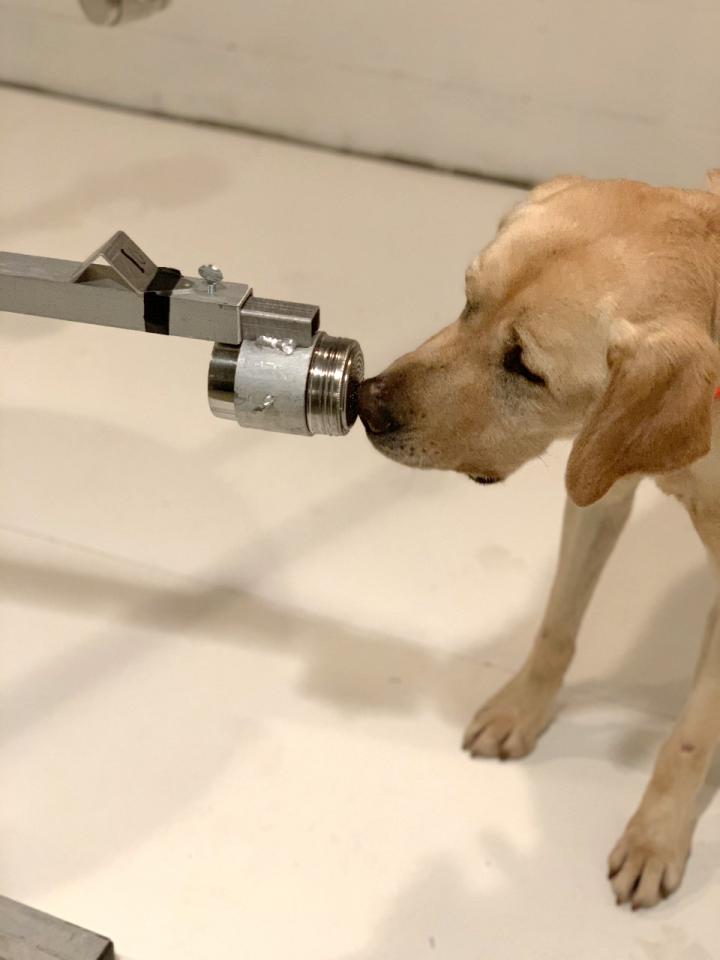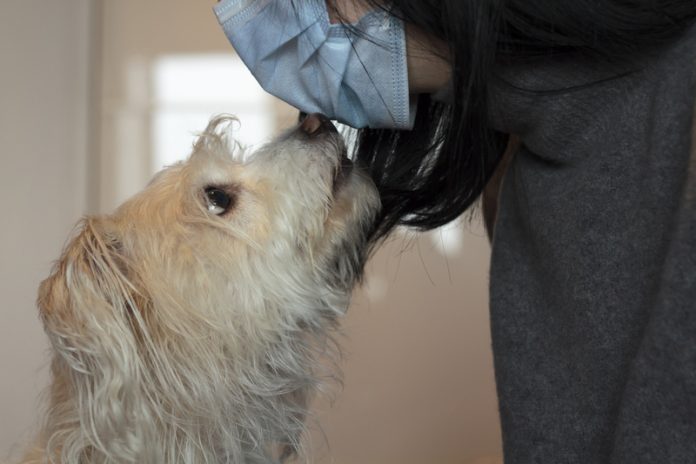According to a new study, led by the University of Pennsylvania, specially trained detection dogs can sniff out positive COVID-19 samples with 96% accuracy
Eight Labrador retrievers and a Belgian Malinois that had never done medical detection work previously were used in a new study, led by the University of Pennsylvania, to sniff out positive COVID-19 samples.
The researchers first trained the dogs to recognise a synthetic substance known as universal detection compound (UDC) and when they consistently responded to the UDC scent, the team began training them to respond to urine samples from SARS-CoV-2 positive patients.
After three weeks of training, all nine dogs were able to identify SARS-CoV-2 positive samples, with 96% accuracy on average.

CREDIT: Pat Nolan
However, their ability to avoid false negatives was lower. If the dogs walked by a port containing a positive sample even once without responding, that was labelled a “miss.”
“This is not a simple thing we’re asking the dogs to do,” says Cynthia Otto, senior author on the work and director of the University of Pennsylvania School of Veterinary Medicine Working Dog Center. “Dogs have to be specific about detecting the odour of the infection, but they also have to generalise across the background odours of different people: men and women, adults and children, people of different ethnicities and geographies.”
The researchers ran into many complicating factors in their study, such as the tendency of the dogs to discriminate between the actual patients, rather than between their SARS-CoV-2 infection status. The dogs were also thrown off by a sample from a patient that tested negative for SARS-CoV-2 but who had recently recovered from COVID-19.
“The dogs kept responding to that sample, and we kept telling them no,” Otto says. “But obviously there was still something in the patient’s sample that the dogs were keying in on.”
T-shirt study
Another investigation in which dogs are being trained to discriminate between the odours of COVID-positive, -negative, and -vaccinated individuals based on the volatile organic compounds they leave on a T-shirt worn overnight, is also underway.
“We are collecting many more samples in that study–hundreds or more–than we did in this first one, and are hopeful that will get the dogs closer to what they might encounter in a community setting,” Otto says.
The full study has been published in the journal PLOS ONE.











